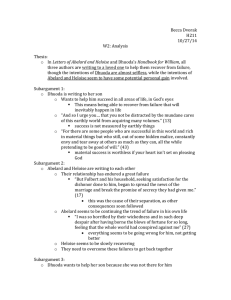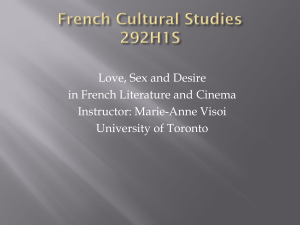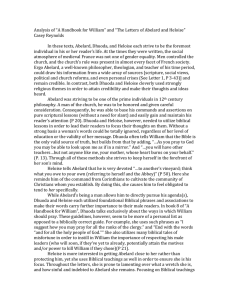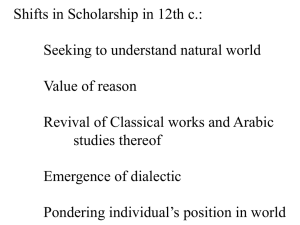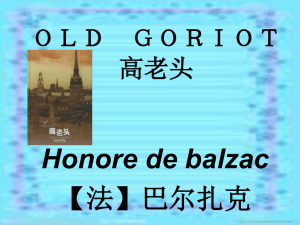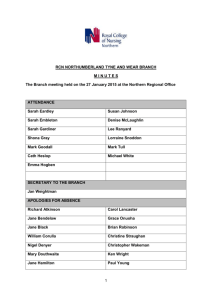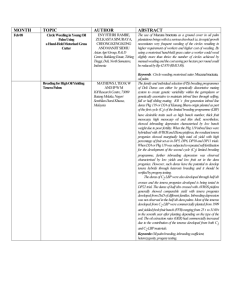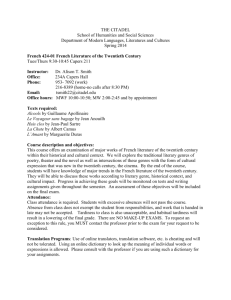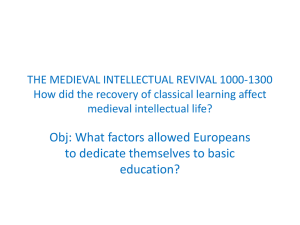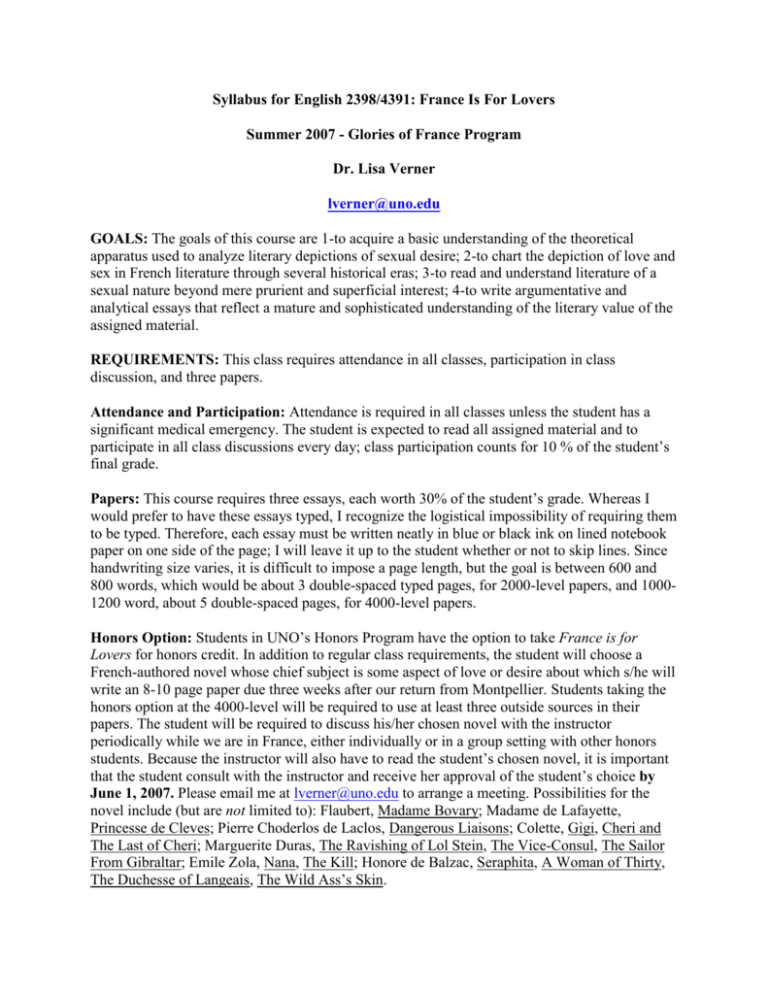
Syllabus for English 2398/4391: France Is For Lovers
Summer 2007 - Glories of France Program
Dr. Lisa Verner
lverner@uno.edu
GOALS: The goals of this course are 1-to acquire a basic understanding of the theoretical
apparatus used to analyze literary depictions of sexual desire; 2-to chart the depiction of love and
sex in French literature through several historical eras; 3-to read and understand literature of a
sexual nature beyond mere prurient and superficial interest; 4-to write argumentative and
analytical essays that reflect a mature and sophisticated understanding of the literary value of the
assigned material.
REQUIREMENTS: This class requires attendance in all classes, participation in class
discussion, and three papers.
Attendance and Participation: Attendance is required in all classes unless the student has a
significant medical emergency. The student is expected to read all assigned material and to
participate in all class discussions every day; class participation counts for 10 % of the student’s
final grade.
Papers: This course requires three essays, each worth 30% of the student’s grade. Whereas I
would prefer to have these essays typed, I recognize the logistical impossibility of requiring them
to be typed. Therefore, each essay must be written neatly in blue or black ink on lined notebook
paper on one side of the page; I will leave it up to the student whether or not to skip lines. Since
handwriting size varies, it is difficult to impose a page length, but the goal is between 600 and
800 words, which would be about 3 double-spaced typed pages, for 2000-level papers, and 10001200 word, about 5 double-spaced pages, for 4000-level papers.
Honors Option: Students in UNO’s Honors Program have the option to take France is for
Lovers for honors credit. In addition to regular class requirements, the student will choose a
French-authored novel whose chief subject is some aspect of love or desire about which s/he will
write an 8-10 page paper due three weeks after our return from Montpellier. Students taking the
honors option at the 4000-level will be required to use at least three outside sources in their
papers. The student will be required to discuss his/her chosen novel with the instructor
periodically while we are in France, either individually or in a group setting with other honors
students. Because the instructor will also have to read the student’s chosen novel, it is important
that the student consult with the instructor and receive her approval of the student’s choice by
June 1, 2007. Please email me at lverner@uno.edu to arrange a meeting. Possibilities for the
novel include (but are not limited to): Flaubert, Madame Bovary; Madame de Lafayette,
Princesse de Cleves; Pierre Choderlos de Laclos, Dangerous Liaisons; Colette, Gigi, Cheri and
The Last of Cheri; Marguerite Duras, The Ravishing of Lol Stein, The Vice-Consul, The Sailor
From Gibraltar; Emile Zola, Nana, The Kill; Honore de Balzac, Seraphita, A Woman of Thirty,
The Duchesse of Langeais, The Wild Ass’s Skin.
A WORD ABOUT OUR READING MATERIALS: The subject of the literature under
discussion--love, sex, and seduction--is both intimate and potentially disconcerting. It is also
potentially a lot of fun, both the reading and class discussion. I do, however, expect all members
of the class to be respectful of the texts, particularly of sexualities that may seem foreign or even
offensive. Remember, we are discussing literature, not morality, and we are all adults. That being
said, have fun with the materials; they really are quite interesting.
REQUIRED TEXTS
The Letters of Abelard and Heloise
The Girl with the Golden Eyes by Honore de Balzac
Green Wheat by Colette
The Lover by Marguerite Duras
a few short story handouts
For 4000-level students only: handouts on the theory and history of sexuality from Freud,
Bataille, and Foucault
DAILY SCHEDULE
Wednesday, July 4: Introductory lecture on theories of sexuality: Freud, Bataille’s Erotism, and
Foucault’s History of Sexuality; introduction to Abelard and Heloise.
Thursday, July 5: Abelard’s Historia Calamitatem from The Letters of Abelard and Heloise.
Friday, July 6: The Personal Letters from The Letters of Abelard and Heloise; Andreas
Capellanus’ The Art of Courtly Love [handout].
Monday, July 9: Finish discussion of Abelard and Heloise; Marquis de Sade’s Augustine de
Villeblanche, or Love’s Stratagem [handout].
Tuesday, July 10: Begin Balzac’s The Girl with the Golden Eyes.
Wednesday, July 11: Continue Balzac’s The Girl with the Golden Eyes.
Thursday, July 12: Finish Balzac’s The Girl with the Golden Eyes. Paper one due (note--may
be turned in later in the day).
Note for Paris field trip: Tucked away on a quiet side street behind Notre Dame Cathedral is
the house of Heloise’s uncle Fulbert, the canon of Notre Dame, where Abelard and Heloise met
and began their legendary liaison. It has been renovated since the Middle Ages, but it is
miraculously still there and I make a point of visiting it every time I’m in Paris. I would like you
to go see it as well (it will take five minutes of your time and is probably on the way to
somewhere you will be going). Visitors cannot go inside as the house is a private residence, but
there is a plaque, complete with idealized portraits commemorating the lovers, affixed to the
house itself. The address is 10 rue Chanoinesse, but the plaque and portrait are on the other side
of the house visible from the Quai aux Fleurs. Abelard and Heloise are also buried together in a
rather ornate tomb in Pere Lachaise Cemetery. This cemetery is the final resting place of Colette,
Balzac, Moliere, Oscar Wilde, and, also in the same tomb, Gertrude Stein and Alice B. Toklas.
In addition, you will find it very convenient to investigate the Jardin des Tuileries, where
Balzac’s protagonist Henri de Marsay begins his seduction of Paquita, as it is located next to the
Louvre which we will be visiting together.
Monday, July 16: Excerpt from Colette’s The Pure and the Impure [handout].
Tuesday, July 17: Colette’s Green Wheat.
Wednesday, July 18: Continue Colette’s Green Wheat.
Thursday, July 19: Finish Colette’s Green Wheat.
Monday, July 23: Begin Duras’ The Lover. Paper two due.
Tuesday, July 24: Continue Duras’ The Lover.
Wednesday, July 25: Finish Duras’ The Lover.
Thursday, July 26: Excerpt from Duras’s Practicalities, “Men” [handout];
Monday, July 30: Proust’s The Confession of a Young Woman and Marquis de Sade’s The
Prude [handouts].
Tuesday, July 31: Handouts: Marquis de Sade’s The Successful Ruse and The Pimp Well
Served.
Wednesday, August 1: Wrap up/make-up missed readings.
Thursday, August 2: Paper three due.
Paper One--choose one
1-The poet Baudelaire famously asserted, “I say the unique and supreme pleasure of love lies in
the certainty of doing evil; and men and women know from birth that all pleasure is to be found
in evil.” Bataille and Foucault would agree, in fancier language, that taboos are there to be
violated and that pleasure derives from violating rather than upholding taboos. Write an essay
that illustrates the truth of this theory using EITHER The Letters of Abelard and Heloise OR The
Girl with the Golden Eyes.
2-De Sade’s Love’s Stratagem, Andreas Capellanus’ The Art of Courtly Love, and Balzac’s The
Girl with the Golden Eyes all employ elaborate ritual and planning in the practice of seduction.
Write an essay in which you explore how ritual and planning increase the pleasure of seduction.
3-An old apocryphal story relates that Queen Victoria refused to sign legislation making
lesbianism illegal because she could not believe that it existed. “Two women,” she is reported to
have said, “what could they DO?” Although it is very unlikely that this story is true, what is true
is that lesbian desire is not often taken seriously, especially by male authors. Write a paper in
which you analyze how lesbian desire is (mis)represented in de Sade’s Love’s Stratagem and
Balzac’s The Girl with the Golden Eyes.
Paper Two--choose one
1-Analyze Colette’s Green Wheat as a coming-of-age story. Bear in mind that more than one
character may be coming of age and that sexual initiation is merely one component of the
process. You might want to make the case that one character has actually come of age while
another has not--but which one?!
2-Green Wheat depicts a fairly classic love triangle, but it’s not just two women struggling over
one man in this case; several forces are vying for Philip’s soul. What are these forces and how
are they represented through the characters of the women? Who wins?
3-It has been noted that although women are traditionally depicted as the “romantic” ones while
men are the “practical” ones in love stories, this dynamic is reversed in much of Colette’s fiction.
Consider the main characters of Green Wheat in respect to traditional gender ideas about sex,
seduction and romance; what is Colette saying with her changes to the traditional clichés?
Paper Three--choose one
1-Compare the characters of Vinca in Colette’s Green Wheat and the narrator of Duras’ The
Lover. What can we infer from these two depictions of very young girls completely in control of
their own sexual desires and the desires of others?
2-Consider Bataille’s ideas about taboo and sexuality in relation to Duras’ The Lover, Proust’s
Confession of a Young Woman, and de Sade’s The Prude, The Successful Ruse, and The Pimp
Well Served. You may also wish to consider the excerpt from Colette’s The Pure and the Impure.
Do these works deny or confirm the function of taboo in regards to sexuality and desire?
3-In the excerpt “Men” from Practicalities, Duras writes that the girl in The Lover “making her
way towards the man, towards her slavish obligation towards her lover--she has a freedom I
myself have lost” (37). Precisely what kind of freedom does the girl in The Lover have? From
where does it derive? What caused Duras to lose this freedom?
4-In the excerpt “Men” from Practicalities, Duras writes “Men often interpret the sexual
passages in my books as due to prejudice on my part. They pick over everything they read,
everything we do. And laugh at any sexuality not their own” (37). Explain what in The Lover’s
depiction of male AND female sexuality a tradition masculine mindset might find so offensive.

